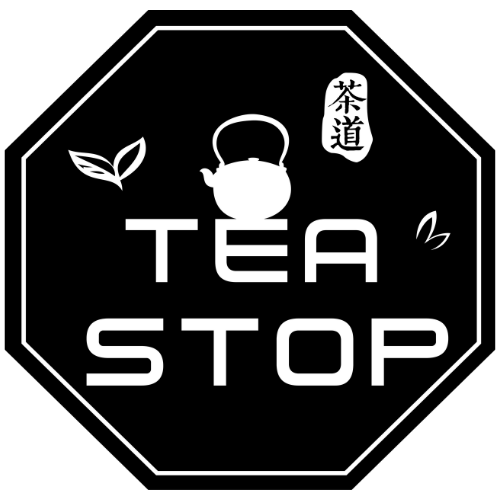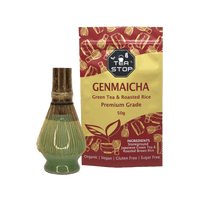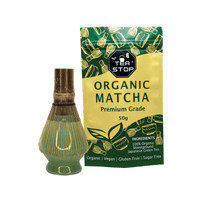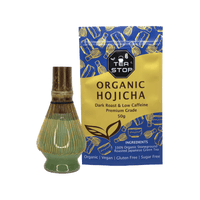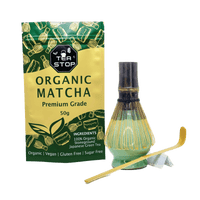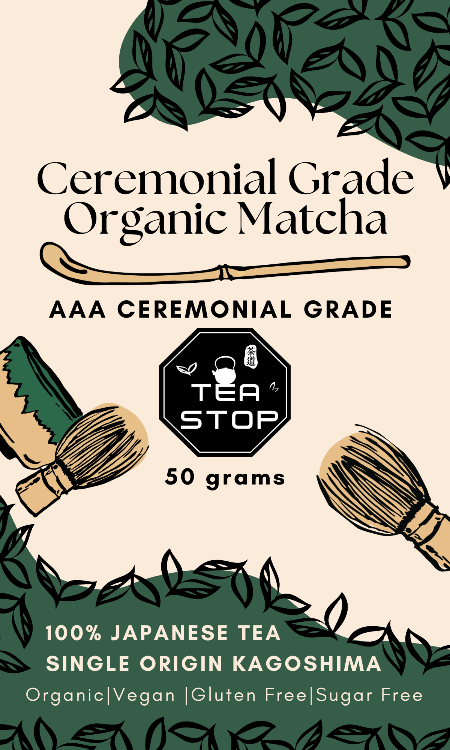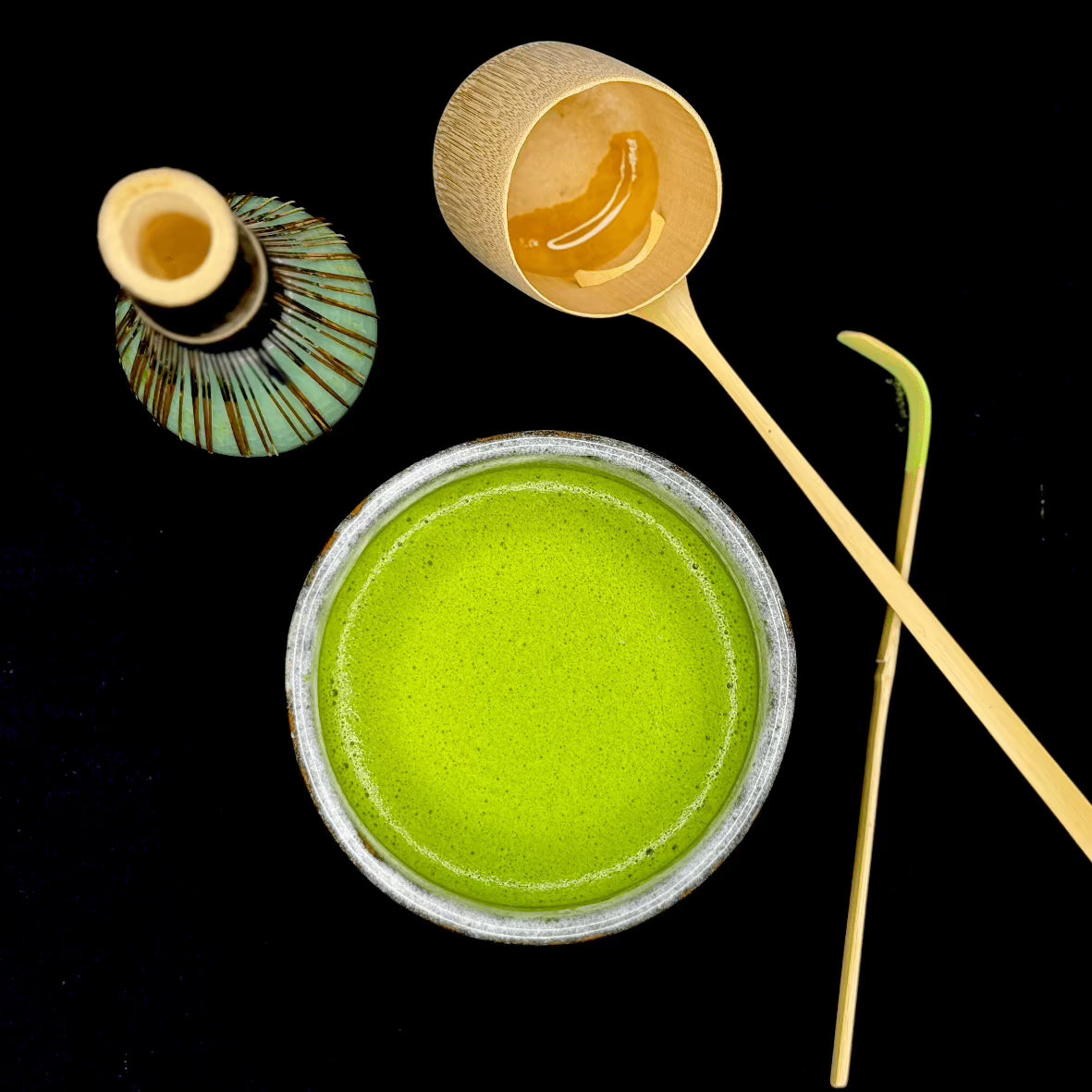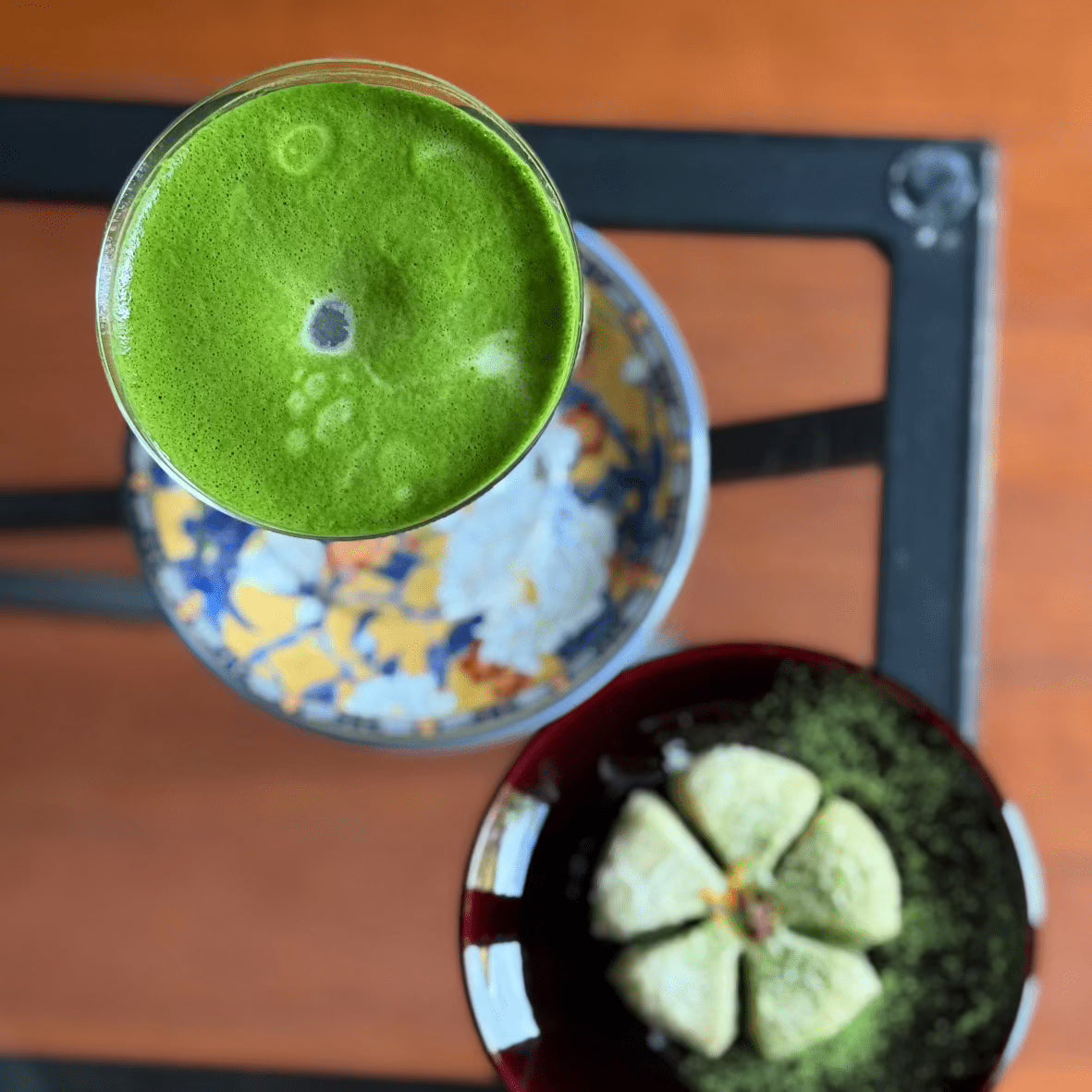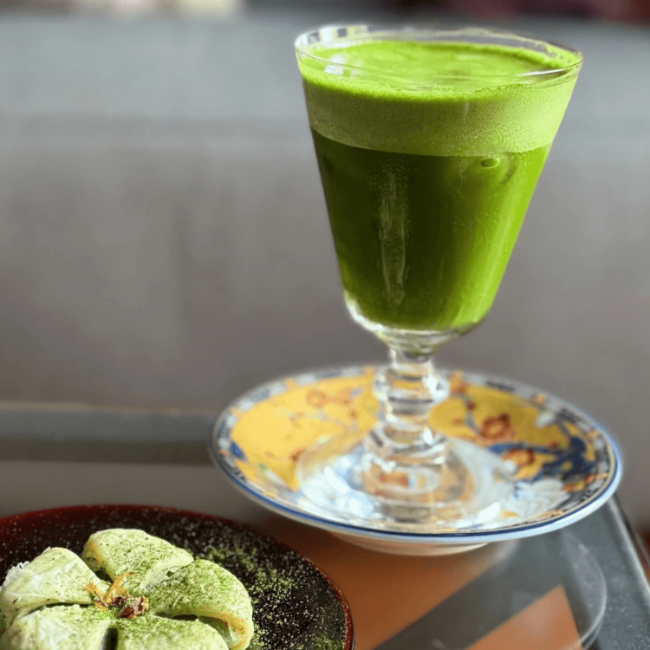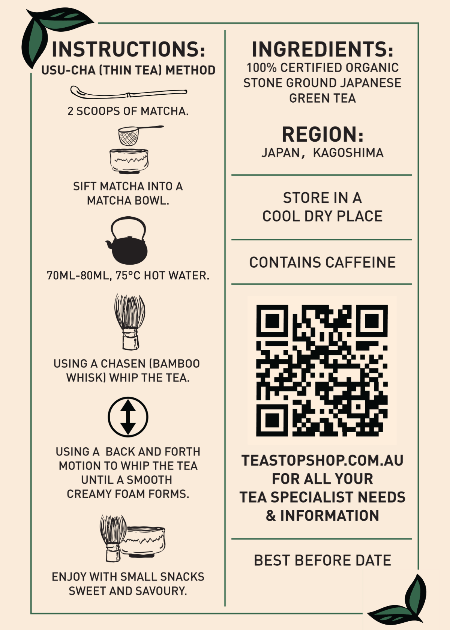
Unleash the Power of Japanese Teaware: Key Essentials
Share
Introduction to Japanese Teaware
Japanese tea culture is a cornerstone of the country's rich heritage, where the art of tea preparation is elevated through meticulous attention to detail and tradition. Central to this practice is Japanese teaware, which plays a crucial role in enhancing the flavors and presentation of the tea.
Each piece of teaware, from kettles to cups, contributes to the ceremonial aspect of tea drinking and reflects Japan's cultural values. This includes our traditional Japanese tea, which are often served in specially designed sets that you can explore here.
In this guide, we delve into both traditional and modern brewing tools used in Japanese tea practices. We'll highlight their unique features and benefits, offering insights into how these tools shape the tea-drinking experience. Whether you are a seasoned tea enthusiast or new to exploring Japanese teas, understanding these tools will enrich your appreciation for this timeless ritual. Don't forget about the essential accessories that further enhance your tea experience!
The Essence of Japanese Teaware
Japanese teaware, which you can explore further in this collection, holds a rich historical significance, deeply embedded in the traditions of tea culture. These tools are not mere utensils; they are artifacts of a long-standing tradition that dates back to the 9th century when tea was introduced to Japan from China. The evolution of teaware in Japan is a testament to the nation's dedication to both functionality and aesthetics, which is evident in the intricate craftsmanship and elegant designs.

Influence of Zen Buddhism
Zen Buddhism profoundly influenced Japanese tea practices and the design of teaware. The Zen principles of simplicity, mindfulness, and impermanence are reflected in the understated elegance and minimalist design of traditional teaware. This influence is seen in the subtle asymmetry and natural textures that characterize many Japanese tea tools. The practice of tea itself became a form of meditation, where each movement is deliberate and each piece of teaware has its specific purpose.
Role in Hospitality
Teaware also plays an essential role in hospitality and enhancing the overall tea-drinking experience. In Japanese culture, serving tea is an act of respect and care for one's guests. The choice of teaware can express the host's aesthetic sensibilities and attention to detail. Whether it is the delicate balance of a chawan or the robust presence of a tetsubin, each tool contributes to creating an atmosphere where guests feel honored and at peace.
Japanese tea culture emphasizes harmony between people and nature, mirrored in both craftsmanship and aesthetics found within traditional teaware. As we delve deeper into specific brewing tools, this harmony becomes even more apparent through their form, function, and cultural symbolism.
Traditional Brewing Tools

1. Tetsubin: The Cast Iron Kettle
The tetsubin is an essential part of traditional Japanese tea-making. This cast iron kettle is not only valued for its practical use but also holds cultural significance in Japan.
Description and History
The tetsubin originated in the 17th century during Japan's Edo period. It was initially created as a container for boiling water, but it soon became an important tool in the tea ceremony, known as chanoyu. Unlike Western kettles that have a spout, the tetsubin is designed without one, which reflects its main purpose—to enhance the taste of the water used in brewing tea.
Craftsmanship and Artistry
Making a tetsubin requires careful craftsmanship, especially in the Iwate Prefecture where this skill has thrived. Skilled artisans use traditional methods passed down through generations, pouring molten iron into detailed molds and adding intricate hand-crafted designs. This process can take several weeks to finish, resulting in kettles that are both practical and visually impressive.
- Materials: Made from high-quality cast iron.
- Designs: Often feature motifs such as cherry blossoms or dragons.
- Functionality: Known for evenly distributing heat, which enhances water quality.
Symbolism and Cultural Significance
In Japanese culture, using a tetsubin goes beyond its practical purpose. It represents ideas of purity and calmness central to Zen Buddhism. Boiling water in a tetsubin is seen as an art form itself, providing a meditative experience that promotes mindfulness and being present.
The kettle's sturdy design symbolizes strength and resilience—qualities highly respected in Japanese society. While preparing tea, the slow boiling process encourages patience and contemplation, connecting the person with age-old traditions.
Overall, the tetsubin is still beloved by both traditionalists and modern tea enthusiasts. Its timeless design and cultural richness make it a lasting symbol of Japanese teaware, effortlessly connecting past customs with present practices.
2. Kyusu: The Traditional Teapot for Green Tea Brewing
The kyusu is a traditional Japanese teapot specifically designed for brewing green tea. Unlike Western-style teapots, which often prioritize looks over practicality, the kyusu is made to be functional, enhancing the experience of drinking tea.
Design Variations and Impact on Flavor
Kyusu teapots come in different designs, such as the "yokode kyusu" with a side handle and the "uwade kyusu" with a top handle. These variations make pouring easier and also affect how the tea is infused. The shape and size of the spout can influence how the tea leaves open up and release flavors, making each brew distinct.
Unique Features
One notable feature of the kyusu is its built-in strainer located near the spout. This allows for a smooth pour without needing an extra straining device, ensuring that even tiny tea leaf particles are filtered out. The clay material used in making kyusus also plays a significant role in improving the taste of green tea by absorbing excess tannins and softening water hardness.
Cultural Significance
In Japanese tea ceremonies, using a kyusu goes beyond just brewing tea; it represents hospitality and respect for tradition. Its use shows an appreciation for simplicity and mindfulness, which are key principles of the tea ceremony.
The kyusu remains an essential tool among traditional Japanese brewing equipment, connecting cultural heritage with the modern quest for perfecting green tea preparation.

3. Chawan: The Matcha Bowl with Seasonal Designs
The chawan, a key component of traditional Japanese brewing tools, is crucial for preparing and serving matcha during tea ceremonies. This bowl is more than just a container; it represents the essence and beauty of the tea ceremony. Each chawan is meticulously designed to enhance the enjoyment of matcha, highlighting values such as harmony, respect, purity, and tranquility.
Artistic Styles and Materials
- Seasonal Motifs: Chawan often feature designs that reflect the changing seasons. These motifs not only add beauty but also invoke a deeper connection to nature, aligning with the Japanese appreciation for the transient beauty of life.
- Materials: Typically made from clay, chawan undergoes a meticulous crafting process where artisans might use techniques like raku, which gives each bowl its unique texture and color. The tactile sensation of holding a handcrafted chawan adds to the sensory pleasure of tea drinking.
Chawan serve both functional and aesthetic purposes within Japanese Teaware culture. Their design can influence how matcha is experienced by focusing on temperature retention and enhancing froth formation. This blend of artistry and utility makes chawan an indispensable part of traditional Japanese brewing tools, alongside other classics such as tetsubin and kyusu.
4. Chasen: The Bamboo Whisk for Frothing Matcha
The chasen, a traditional Japanese brewing tool, is essential for making matcha. It is known for its ability to create a smooth, frothy texture that is crucial for an authentic experience. Made from a single piece of bamboo, the chasen's delicate tines aerate the tea, enhancing both its flavor and visual appeal.
Functionality of Chasen:
- Frothing Matcha: The main purpose of the chasen is to effectively mix matcha powder with hot water, resulting in a creamy texture that balances the tea's strong flavors. The whisking motion used during preparation incorporates air, creating the characteristic froth on top.
Crafting Process:
- Traditional Craftsmanship: Skilled artisans carefully carve each whisk from bamboo, paying close attention to detail to ensure both functionality and beauty.
- Size Variations: Chasens come in different sizes and tine counts to accommodate personal preferences and specific matcha preparation methods. A chasen with more tines usually produces a finer froth, catering to different ceremonial requirements or individual tastes.
This focus on craftsmanship and functionality reflects the broader values of Japanese teaware—where tradition meets practicality in everyday tea rituals. As we explore these timeless tools, the chasen stands out not just as an utensil but as a symbol of Japanese dedication to artful tea brewing.

Tea Storage Solutions: Preserving Leaf Quality Over Time
Maintaining the freshness and flavor of tea leaves requires careful consideration of their storage environment. Proper storage methods for tea leaves are essential to safeguard them against exposure to light, moisture, and air. These elements can lead to deterioration in quality, affecting both taste and aroma.
Key Principles of Tea Storage
- Light: Direct sunlight can rapidly degrade tea's delicate compounds, leading to a loss of flavor and aroma. It's best to store tea in a dark place or use opaque containers.
- Moisture: Even small amounts of moisture can cause mold growth in tea leaves. Keeping them in a dry environment is crucial for preserving their quality over time.
- Air Exposure: Oxygen can oxidize tea leaves, particularly green teas, altering their flavor profile significantly. Airtight containers are ideal for minimizing air contact.
Suitable Storage Containers
Selecting the right container is vital for maintaining the integrity of different types of teas:
- Tins: Ideal for black teas, these metal containers provide an airtight seal that protects against light and air exposure. Their opaque nature also helps in shielding the leaves from potential damage by light.
- Jars: Glass or ceramic jars with tight-sealing lids are often used for oolongs or pu-erh teas. While they offer visibility, it's important to ensure these jars are stored away from direct sunlight.
- Pouches: Resealable pouches made from foil or mylar are lightweight options that offer excellent protection against air and moisture, making them versatile for various tea types.
By understanding the unique needs of each type of tea and selecting appropriate storage solutions, you can enjoy your favorite brews at their best quality for longer periods.
Modern Innovations in Teaware Design
The world of Japanese teaware has changed, embracing new advancements in brewing equipment that combine tradition with modern technology.
Electric Kettles
Today's electric kettles offer precise temperature control, essential for brewing delicate Japanese teas like sencha or gyokuro. This precision ensures that the subtleties of each tea leaf are fully appreciated.
Glass Teapots
Glass teapots have gained popularity, allowing tea enthusiasts to visually enjoy the infusion process. Their transparency showcases the vibrant hues of different teas, enhancing the sensory experience.
Ceramic Mugs with Built-in Infusers
Similarly, ceramic mugs with built-in infusers combine convenience with aesthetic appeal, making them perfect for on-the-go tea lovers.
The Blend of Tradition and Modernity
The integration of modern materials and designs not only elevates functionality but also continues to honor the artistry and essence of traditional Japanese teaware.
In this way, modern innovations in Japanese teaware reflect a harmonious blend of age-old practices and cutting-edge design, ensuring that both connoisseurs and casual drinkers alike can enjoy an enriched tea-drinking journey.

FAQs (Frequently Asked Questions)
What is the significance of teaware in Japanese tea culture?
Teaware plays a vital role in Japanese tea culture, reflecting historical craftsmanship and aesthetic values. It embodies the connection between Zen Buddhism and tea practices, enhancing the overall tea-drinking experience by promoting hospitality.
What are some traditional brewing tools used in Japanese tea preparation?
Traditional brewing tools include tetsubin (cast iron kettle), kyusu (teapot for green tea), chawan (matcha bowl), and chasen (bamboo whisk). Each tool has unique features that contribute to the flavor and presentation of the tea.
How does a tetsubin enhance the tea brewing process?
The tetsubin, known for its craftsmanship particularly from Iwate Prefecture, is symbolic in Japanese culture. It is designed for boiling water efficiently, which is essential for brewing various types of tea, making it a staple in traditional Japanese teaware.
What role does a kyusu play in Japanese tea ceremonies?
The kyusu is a traditional teapot specifically designed for brewing green tea. Its design variations significantly impact the flavor profile of the brewed tea. The use of a kyusu is essential in Japanese tea ceremonies, emphasizing its cultural importance.
Why is proper storage important for preserving tea leaf quality?
Proper storage methods protect tea leaves from light, moisture, and air exposure, which can degrade their freshness over time. Using suitable storage containers like tins for black teas or jars for oolongs helps maintain optimal flavor and quality.
How has modern technology influenced teaware design?
Modern innovations have led to advancements in the design and functionality of teapots, kettles, cups, and other brewing equipment. These contemporary designs often incorporate materials and technologies that enhance usability while respecting traditional aesthetics.
